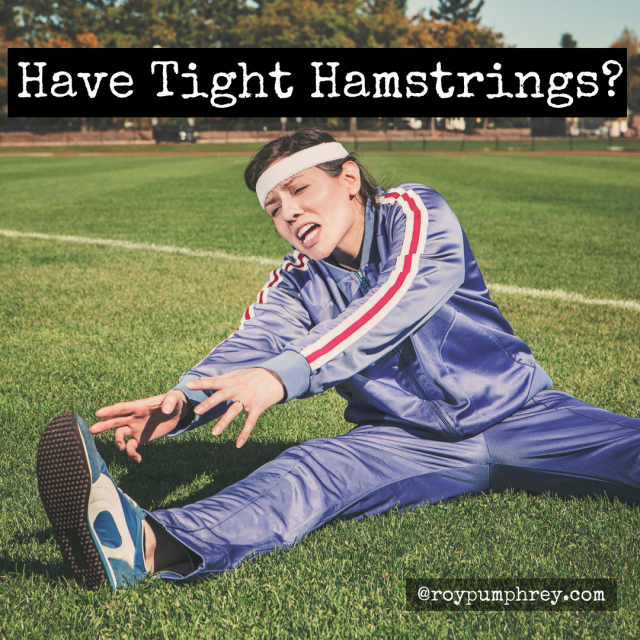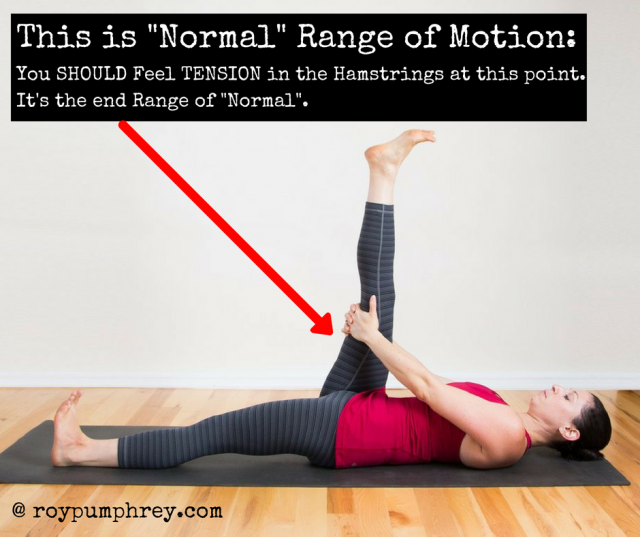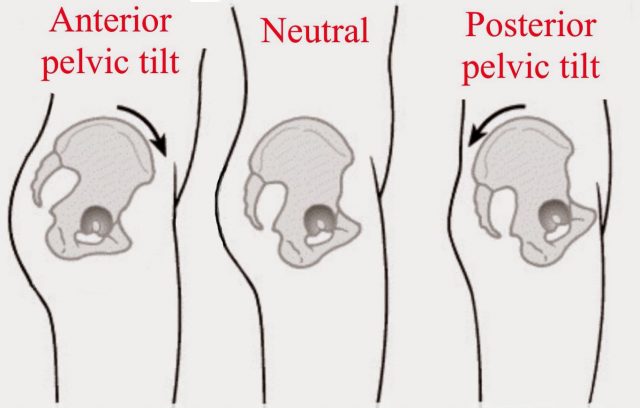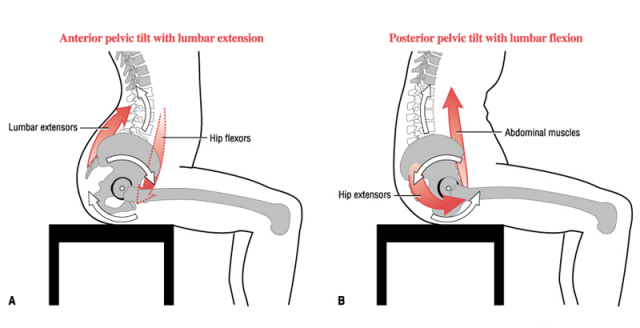
“My Hamstrings Are Tight”
Truth is, this is rarely the case.
At least not in the way you think.
*Quick Note:
Some people DO have tight hamstrings.
This has to do with the tendon length, muscle belly, past injury, origin and insertion points.
Sometimes, when you put all these things together in the right combo, you DO, in fact have structurally“tight hamstrings”.
Most don’t.
What the Hell Do I Mean by Tight Hamstrings?
Ummm they feel tight…right?
But for real,
TENSION.
Lots of tension in the muscle, in the hamstring.
That’s usually what people mean when they use the term “tight”.
But the real question is,
Tension When?
I would define “Tight Hamstrings” as abnormal amounts of tension in the
NORMAL RANGE OF MOTION
If you do a hamstring stretch and your hamstrings fire back with increased tension..
That’s NORMAL
and doesn’t mean you have tight hamstrings.
It means your muscle spindles function.
Muscle Spindles:
“Muscle spindles are skeletal muscle sensory receptors within the body of a muscle that primarily detect changes in the length of this muscle contributing to fine motor control and providing axial and limb position information to the central nervous system. The responses of muscle spindles to changes in length also play an important role in regulating the contraction of muscles, by activating motor neurons via the stretch reflex to resist muscle stretch” – Physiopedia
Wait, But What?
Yeah, so if you can’t get your foot to your head….
That’s NORMAL, It doesn’t mean that you have tight hamstrings.
There should be hella high tension in the muscle at the end range of motion.
Hell, anything past straight up and down in hip flexion, the basic ACTIVE hamstring test (Straight Leg Raise), is typically considered outside the “normal” range of motion.
Stability vs. Mobility
They range from stable to mobile, and you need to train the joint based on what it needs for optimal function.
Generally, you want:
- Mobile enough to have full range of motion.
- Stable enough to control the available range of motion.
Hypermobility is (Almost Always) a Bad Thing.
It means you’re moving (usually uncontrolled) past the normal range of motion.
*Honestly, I can’t think of when hypermobility a good thing except if you’re a contortionist and make a living because of it.
But Mobility is at the Joint?
True, Flexibility is at the Muscle.
But muscles give the joints shape and control positions/ motions at the joint.
So a hyperflexible muscle is usually necessary for the hypermobile joint and vice versa.
Consequently a hyperflexible muscle tends to not to do a good job of controlling/ sending feedback on the tension and length of the muscle and fails to give the brain (motor control) good/ accurate feedback of the joint/ limb positions.
ie. I can put my leg on my forehead and don’t even feel a stretch in the hammies. Shouldn’t the feedback in at full stretch be different from at “resting” length?
Conversely, “Tight” hamstrings will “run out of length” too soon and send the signal to the brain to STOP lengthening/ allowing that joint motion to take place.
At this point, when tension kicks in, 99% of people will just compensate with their pelvic/ lumbar and thoracic position to achieve a position that “looks” similar, but isn’t even close.
So What Does Any of This Have to Do With my Tight Hamstrings?
Well, they’re probably not tight because you have a structurally “short” muscle.
You probably do not need to and should not stretch them.
Overstretching, creating more laxity in the system may be contributing to the feelings of and neural/ protective tightness they’re exhibiting.
*Stretching is NOT a panacea for a tight muscle, it’s a tool.
There are many occasions where stretching a muscle, especially one that is tight to provide stability will make the muscle tighter.
Think about it:
If you make the thing that is holding the system together loose, you (through stretching) send the signal (to the brain) that there is excess motion in the system.
“even when the hamstrings are not naturally tight, they often become tight to compensate for weakness or instability elsewhere in the body.” –Matt Fitzgerald
Shouldn’t That Muscle Tighten up More?
That’s why you shouldn’t do the “touch your toes stretch” for a tight back.
Your hamstrings are probably tight because the forces around the joint are not acting in a way to stabilize the joint while allowing for optimal movement at that joint.
Basically, you can’t stabilize the joint through your available range of motion.
You Lack Motor Control:
Motor control refers to the process by which the nervous system coordinates the muscle and limbs to achieve a desired movement or set of actions. This includes the ability to anticipate, adjust and respond to deviations from the desired action. –Nature.com
“The process of initiating, directing, and grading purposeful voluntary movement”- Physiopedia
Almost 700 Words into a Physiology Lesson and Now he Gets to the Point:
Your Hamstrings Are Doing too Much.
Or at least trying to do too much, and they suck at it.
In my experience, tight hamstrings are the result of the brain relying on the hamstrings to do too much.
Primary Functions of the Hamstrings:
- Flex the Knee
- Extend the Hip
Not:
- Stabilize the Hip.
Hammies, It’s Not You, It’s Me
The Pelvis is Like a Bowel of Water
When the bowl tilts and the water pours out things are outta whack.
The Glutes “set” the pelvis from below.
The Core “sets” the pelvis from above.
If either is weak or underactive the bowl tilts and things can be less than optimal.
If You Have a Weak Ass:
If your glutes are not “setting” the hip from the bottom so the hamstrings are going to try.
They just can’t do a good job.
At least not from a multiplanar stability standpoint. <—–Hamstrings do a nice job of hip extension.
The ONLY thing the hamstrings can do to stabilize the pelvis is TIGHTEN up.
Pulling down on the pelvis, moving it into posterior pelvic tilt and limiting the ability of the pelvis to move into anterior pelvic tilt.
Posterior Pelvic Tilt: No Ass Syndrome
“Usually, when someone suffers from a posterior pelvic tilt, they will aggressively stretch their hamstrings and smash their glutes with a lacrosse ball to try and loosen up the muscles.”- Precision Movement
Essentially, the “sit bone” is pulled down, rotating the origin of the hamstring into the center line, moving the pelvis into a posterior tilt and out of a neutral position.
The more time spent in this PPT or No Ass Syndrome posture will FEED into tighter/ overactive hamstrings and hip flexors further diminishing glute activation and making the hamstrings “tighter”.
But their not really “tighter”.
The hams didn’t get physiologically shorter, they’re just doing too much work.
Exerting too much static/ neural/ protective tension at resting length, trying to be both a pelvic stabilizer and a hip extender.
This is one of the ways weak glutes increases the likelihood of hamstring strains:
“hamstring pulls. The hamstrings take over the primary work of the glutes to extend the hip. That extra work causes strain.” 10 warning signs your glutes are inhibited
And both chronic and acute hamstring strains will “tighten” the hamstrings:
“the simple fact that the single-best predictor of hamstrings strains is a previous hamstrings injury. One you have an injury, that area may never be the same from a tissue density standpoint – whether it’s the surrounding fascia or the muscle or tendon itself. A previous injury can leave athletes feeling “tight” in the region“- Eric Cressey
Fix That Sh@t:
#1: Quit Sitting Like Sh@t All Day
If you sit all day with your “tail tucked under” and a rounded of flat low back..
You’re literally in the position we’re trying to fix.
You’re feeding the beast.
Do that for 8-12 hours a day and there aint a damn thing you can do in the gym that’s going to counteract posterior pelvic tilt, the “dose” of crappy sitting posture is just too high.
#2: Build Some Glutes
Ones that actually DO something.
An ASS that actually EXTENDS THE HIP.
I would recommend you start with exercise that put the hamstring in a shortened position, ie a bent knee.
The shortened hamstring will be a less tense hamstring and if you can maintain posture (a neutral spine/ pelvis) you’ll primarily activate the glutes and not the hamstrings to extend the hip.
Exercises Like Glute Bridges and Hip Thrusts work well here.
If your hamstrings cramp, the pelvis rolls (belt buckle rolls to the chin/ lumbar spine rounds).
STOP, START OVER FROM THE BOTTOM.
Relax, Reset:
- Ribcage (ribs down)
- Core (abs on from the start)
- Feet
- Glutes (Feel them BEFORE extending the hip)
Bro Tips:
- If you have trouble with getting the glutes to fire, stick a finger in your butt cheek with the goal of squeezing so hard you press it out. <—-anytime you need help activating/ feeling a muscle, stick a finger in it. The tactile pressure gives the brain a “target”.
- If you lose the spine/ pelvic alignment easily, imagine, or use tape. Find perfect position on the bottom. Attach tape to the bottom rib and the belt line. If it wrinkles, the belt rolled to the chin you used your hamstrings to extend the hip. If the tape breaks or loses attachment, you rolled the hip “away” into anterior pelvic tilt and extended the lumbar spine, not the hips to lift the hips up.
Get it Right, Be Precise.
Practicing crappy movement will only feed the crappy movement and make things worse.
Then progress to an ass that can extend the hips in CONJUNCTION with the hamstrings.
Once you’ve mastered bent knee hip extension exercises, move to straight or semi-straight leg hip extension.
Exercises like:
- Straight Leg Hip Extension
- Elevated Bent Knee Hip Extension
- Heels Elevated Hip Thrusts
- Stability Ball hamstring Curls
- Slider Hamstring Curls
- Foam Roller Hamstring Curls
- Hamstring Walks
At first stick to ground based exercises, don’t just jump to the deadlifts, and RDL’s.
Remember, if your hamstrings are taking over:
- constantly cramping
- they’re all you can feel
- cant feel the glutes
- cant maintain a “flat crease” at the hip
YOU SUCK at this.
If you continue to do the movements in a hamstring dominant pattern, allowing the hamstring to drive the movement, you’ll never get the glutes to drive hip extension.
You’ll FEED the problem you’re trying to correct.
Get things moving right, you’ll be a BOSS.
Be A Boss.
But, Roy, I have an ass, #bootygainz, and still have tight hammies?
Maybe you’re in too much anterior pelvic tilt and they’re constantly on stretch?
We’ll handle that next week.






[…] time we dealt with the dreaded No Ass Syndrome and how that can give you some tight […]